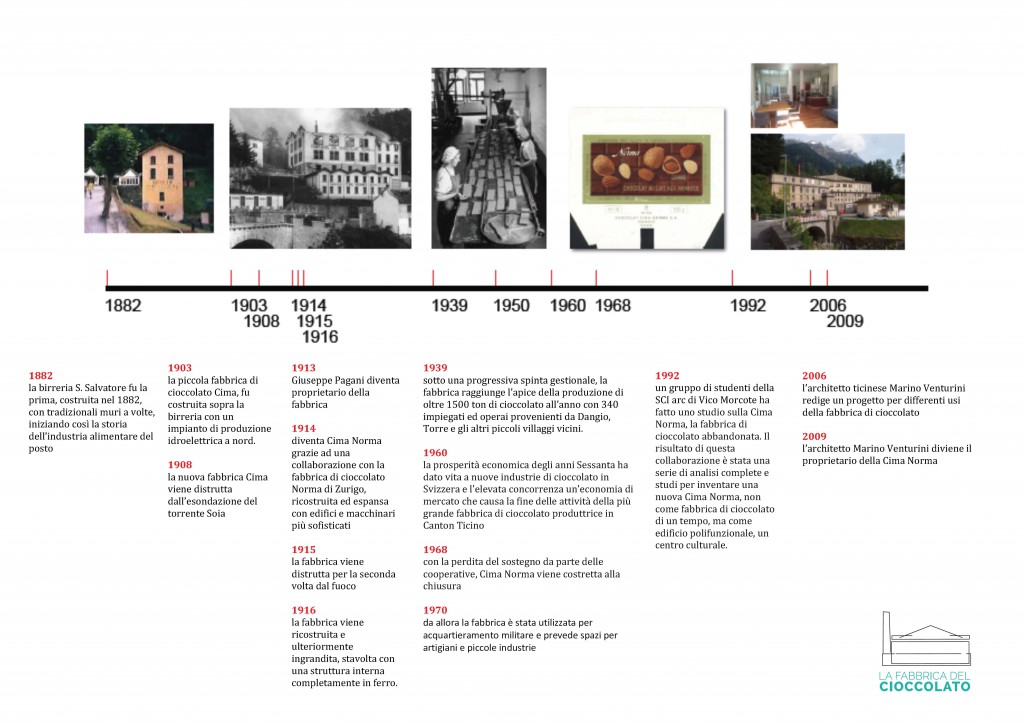Torre village (800 masl) has been familiar with the production of chocolate since XIX century, when the population used to work as chocolate manufacturers abroad. Indeed, Maestrani family founded chocolate factories in Luzern and in St. Gallen; while Cima family founded one in Nice and in Milan.
In 1882, “San Salvatore” brewery was established between Torre and Dangio villages; “Birra Bellinzona” bought it a few years later.
In 1903, a power station was built to provide surrounding villages with electricity and Cima brother established the chocolate factory “Cima”.
In 1908 a storm caused a flood that destroyed the factory, but Cima brothers restored it, with help of Giuseppe Pagani, the owner of Pagani’s restaurant in London, well known by politicians and artists. The factory bought “San Salvatore” brewery; in 1913, Giuseppe Pagani became Cima’s owner, and in 1914 he bought “Norma” chocolate factory in Zurich.
In 1915, the cocoa roasting department caught fire, but Giuseppe Pagani fixed and expanded the factory. Cima Norma used to produce chocolate both for its own brand, and for some important customers.
Giuseppe Pagani died in 1939 and his sons-in-law Francesco Antognini and Luigi Ferrazzini became the factory’s managers.
Cima Norma constantly increased its growth until the 60s, when it produced 1500 tons of chocolate per year and employed 340 people. The factory’s managers also bought innovative machinery, like “Cavemille” or “Automolda”, which turn liquid chocolate into bars.
In the following years, competitors became stronger and Cima Norma lost its main customer; despite the efforts aimed at finding new customers, the factory closed in 1968. Machinery and raw materials were sold, while the buildings became a military warehouse and were later made available to organise arts and crafts workshops and to build lofts.
In 2009, Cima Norma SA became a real estate company, and the majority stake was acquired by Marino and Maria José Venturini.
In 2015 the main building was transformed into a condominium.
In 2016, almost half of the usable areas of the property were donated to the newly established Fondazione La Fabbrica del Cioccolato to be used for cultural purposes.
Source: Michael Schindhelm / Giulio Margheri

Cima Norma between 1882 and 2009 (pdf – in Italian)

